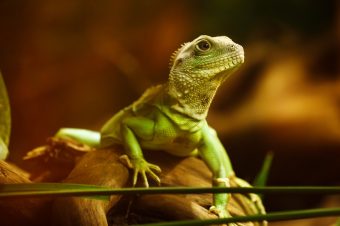
With imports of Fish and Wildlife-regulated reptiles exceeding one million individuals each year, it is no surprise that many of these animals are finding their way into the wild, where they are threatening natural ecosystems. Exotic pets can be extremely endearing and are bought at a low cost when they are babies. But when these animals get too large to handle or are cast off by wavering attention spans, they invade native ecosystems. This is the case for iguanas, Chinese water dragons and ball pythons, which have become the most commonly released pets in the wild, according to new research.
The massive exotic pet trade, which isn’t fully regulated, has become the leading cause of invasive amphibians and reptiles in the wild. Whether as predatory hunters or as spreaders of “alien” diseases and pests to native populations, the discarded exotic pets are wreaking havoc that ecologists and animal control workers are endlessly working to offset.
Oliver Stringham and Julie Lockwood, leading ecologists at Rutgers University in New Brunswick, researched the prevalence of specific exotic species. The paper was published on Wednesday and cross-references attributes of species that are commonly released versus those that are typically kept by their owners. The study compared data from citizen scientists on numbers of species that were introduced into the wild with figures of imports and sales from online pet stores.
In total, the researchers documented 1,722 species of reptiles and amphibians that were sold on the U.S. market between 1999 and 2016. They found that species that grow to large sizes were most likely to be released. Some of the animals also have long lifespans for pets, as in the case of the boa constrictor, which requires costly care over its 30+ year lifespan.
“These species are so abundant in the pet market, they’re potentially more likely to be bought by impulsive consumers that haven’t done the proper research about care requirements with some small fraction of these consumers resorting to releasing these pets when they become difficult to care for,” Stringham said in an interview with Earther. “Even if released exotic pets fail to become established, they still cause harm to wildlife by spreading new diseases.”
The effects have been catastrophic for many ecosystems. The animal trade-driven chytrid fungus plague alone has devastated amphibian populations on a global scale. In the Florida Everglades, where released exotic pets are the most prevalent, Burmese pythons and tegu lizards continuously scavenge native populations.
Stringham and Lockwood hope that their research will deter importers from selling these wild animals from impulsive buyers in the future; a more likely scenario is the regulation of the amount of animals or the prices for which they are sold.
Source: Inhabitat



